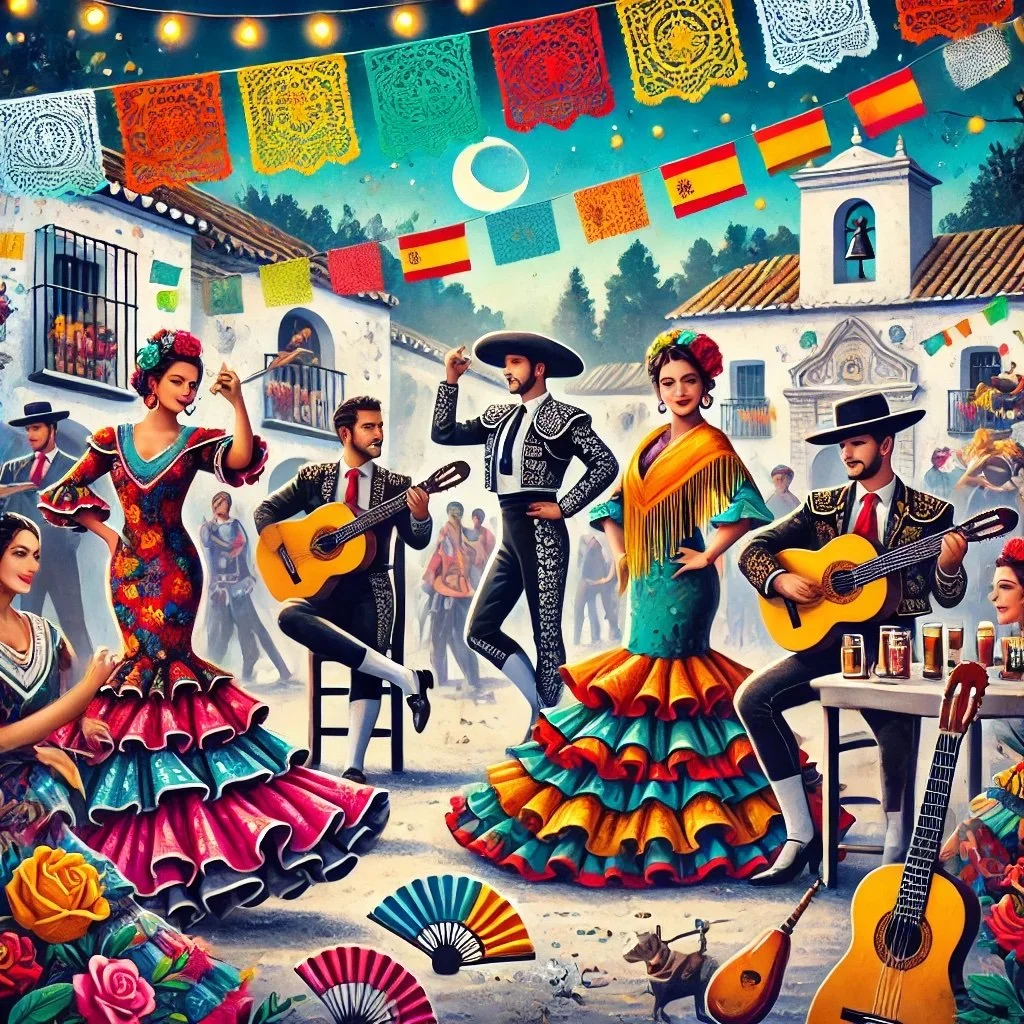Spanish Folklore and Its Influence on Modern Culture
Introduction: Legends That Echo Through Time
Picture yourself wandering through the cobbled streets of Granada at dusk, the air filled with the distant strum of a guitar. As the sun sets behind the Alhambra, a local storyteller recounts the legend of La Dama Blanca—the White Lady who roams the palace grounds. Across Spain, ancient tales of mythical creatures, heroic deeds, and supernatural encounters are woven into the nation’s cultural fabric. These stories are more than relics of the past; they continue to inspire modern art, music, literature, and cinema.
Spanish folklore is a vibrant tapestry of myths, legends, and traditions shaped by centuries of cultural exchange. From the haunting tales of Galicia’s forest spirits to the passionate dances of Andalusia, these narratives reveal the beliefs, fears, and hopes of generations past. Today, their influence can be seen in contemporary art, film, literature, and even fashion, proving that folklore remains a living, breathing part of Spanish identity.
The Roots of Spanish Folklore
Spain’s folklore is as diverse as its landscapes, with each region boasting its own unique myths and legends. The country’s history of Roman, Visigothic, Moorish, and Christian rule has created a rich blend of cultural influences, reflected in its traditional stories.
Galicia: Known for its misty forests and rugged coastline, Galicia is steeped in Celtic folklore. Stories of the meigas (witches) and trasgos (mischievous goblins) are still told today, while ancient rituals like Noite de San Xoán(St. John’s Night) continue to be celebrated.
Basque Country: The Basque people have preserved their myths for centuries. Characters like Mari, the goddess of nature, and Basajaun, the forest protector, embody the region’s deep connection to the land.
Andalusia: Influenced by its Moorish past, Andalusian folklore features both magical legends and heroic tales. The story of La Dama Blanca and the legend of Boabdil, the last Moorish king of Granada, are central to the region’s cultural identity.
Catalonia: Known for its lively festivals, Catalonia’s folklore includes the Caga Tió, a Christmas log that “poops” presents, and the legendary dragon of Sant Jordi, whose defeat symbolizes the triumph of good over evil.
Castile and León: Medieval legends of knights and saints are prevalent in this region. Stories like that of El Cid, Spain’s legendary hero, are celebrated in literature and theater.
Folklore’s Influence on Modern Culture
The influence of Spanish folklore extends far beyond oral storytelling, shaping the nation’s modern cultural landscape.
Literature
Spanish authors have long drawn inspiration from folklore, infusing their works with mythical themes and archetypal characters. Federico García Lorca’s plays, such as Blood Wedding and Yerma, are steeped in Andalusian folklore, exploring themes of fate, passion, and tragedy. Contemporary writers like Carlos Ruiz Zafón incorporate ghostly elements into their novels, creating atmospheric narratives that echo Spain’s supernatural tales.
Music and Dance
Traditional Spanish music and dance are deeply rooted in folklore, with each region boasting its own distinctive styles. Flamenco, with its soulful guitar melodies and passionate dance, is inspired by Andalusian gypsy culture. In Galicia, the haunting sound of the bagpipes reflects the region’s Celtic heritage. Folk festivals, such as the Feria de Abril in Seville and the San Fermín festival in Pamplona, showcase traditional music, dance, and costumes that have been passed down through generations.
Visual Arts
Spanish painters have often depicted scenes from folklore, capturing the country’s myths and legends on canvas. Francisco Goya’s eerie paintings, such as Witches’ Sabbath, explore themes of superstition and the supernatural. In contemporary art, artists like Salvador Dalí and Joan Miró drew on mythological symbols to create surreal and abstract works that continue to captivate audiences worldwide.
Cinema and Television
Spanish filmmakers have embraced folklore as a source of inspiration, blending traditional narratives with modern storytelling techniques. Guillermo del Toro’s Pan’s Labyrinth, set during the Spanish Civil War, incorporates elements of Spanish folklore, including fauns, fairies, and the concept of an underworld. Television series like El Ministerio del Tiempo explore historical events and legends, introducing a new generation to Spain’s rich cultural heritage.
Fashion and Design
Spanish fashion designers often draw from traditional costumes and folklore to create contemporary collections. The vibrant colors and intricate embroidery of Andalusian flamenco dresses, the bold patterns of Basque textiles, and the minimalist elegance of Catalan designs continue to inspire global fashion trends.
Preserving Folklore for Future Generations
In an age of rapid modernization, efforts to preserve Spanish folklore are more important than ever. Cultural organizations, museums, and festivals play a key role in keeping these traditions alive. Events like the Festival Internacional del Cante de las Minas, dedicated to flamenco music, and the Semana Santa processions, with their religious rituals and ancient symbols, continue to attract both locals and tourists.
Folklore is also passed down through storytelling, music, and dance, ensuring that future generations remain connected to their cultural roots. Schools and community groups teach traditional crafts, songs, and dances, fostering a sense of pride and belonging.
Conclusion: The Timeless Legacy of Spanish Folklore
Spanish folklore is more than a collection of ancient stories—it is a living tradition that continues to shape the nation’s identity. From the haunting legends of Galicia to the fiery dances of Andalusia, these tales of heroes, spirits, and mythical creatures resonate with people of all ages. As artists, writers, and filmmakers continue to draw inspiration from this rich cultural heritage, Spanish folklore remains a vibrant and enduring force in modern life.
Discover more articles on language, culture, and tradition at Polyglottist Language Academy, where the spirit of storytelling and cultural exploration thrives.

